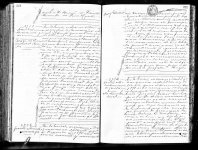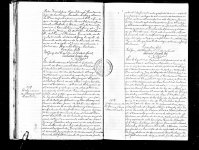Susanna, an extension
For those interested in Rosita this seems quite another thread, but in the reactions I found some reason for exposing the difficulties caused by some names. After all, it was Alberto ElChivizcoyo who showed us the connection of the name Rosita to a woman named Rosalia, which would have been hard to find otherwise.
susanii (Ixos): given as Ixos susanii "Müll." by Bonaparte, 1854. No dedication given. [HBW Alive, Key to scientific names]
Ixos susanii Bonaparte, C.r.Acad.Sci., Paris, 1854: 59. Holotype, (Immature female, vide, Sharpe, Cat.Bds.Brit.Mus., 6 (1881): 62). Reg.no. 1852.5.12.10. Sumatra. Collected by A.Delattre and purchased of Verreaux. [Type specimens of birds Brit.Mus., Vol.2, Passerines, 1971, p.547]
[Séance du lundi 16 janvier 1854. Zoologie: Notes sur les collections rapportées en 1853, par M.A.Delattre, de son voyage en Californie et dans le Nicaragua, par S.E. Lucien, prince Bonaparte.
C.R., 1er sémestre T. XXXVIII, No.3, pp.53-67, p.59.]
Now, if susanii in Ixos susanii would refer to a woman, it would be the third case in my experience of stumbling into a personal name of dubious grammatical termination. The first one was hoflingi in Knipolegus aterrimus hoflingi, apparently named after Elizabeth Hofling, Brazilian ornithologist. This name clearly should be hoflingae for a woman. The name was given by Lencioni-Neto in 1996. Such a mistake could hardly occur in the past centuries, I suppose, for the authors knew the elementary things of Latin and Greek grammar. (There could be an explanation in the English pronunciation of the ending -ae, versus the -i of other languages). Eventually the name was adapted to hoflingae in 2015 (update AOU Checklist).
1.
Knipolegus nigerrimus hoflingi F.Lencioni-Neto, Uma nova subespécie de Knipolegus (Aves, Tyrannidae) do Estado de Bahia, Brasil. Rev.Brasil.Biol., 56 (2), 1996, pp.197-201, p.197.
♂ + ♀ collected at Mucuge, Bahia, Brazil. [ChH+M2 p.370]
K.nigerrimus hoflingae (K.nigerrimus hoflingi)
K.nigerrimus hoflingi [ChH+M2 p.370] = Knipolegus nigerrimus hoflingae [IOC World Bird List, Updates Jan.15, 2015: “Change to feminine genitive.”]
2.
Earlier this year this subforum had a discussion on the name janeti which I found in Ammomanes deserti, given by Meinertzhagen. Apparently the name was given for Janet, sister of Colonel Meinertzhagen's partner Theresa Clay. But then it had to be janetae, not Janet + masculine genitive ending! No explanation has been found.
3.
For Susanna there is a good example:
susannae (Paradisea): name given by Ramsay in 1883, for Lady Susan Emmeline Macleay née Deas Thomson (1838-1903), wife of Scottish/Australian settler and politician Sir William John Macleay. [HBW Alive Key]
The Susanna of this thread, linked in some way to Salomon Müller, could have received such an epithet, but in many cases authors chose for the ending -i, if the person of dedication was a man. (not always so in the past, think of names like bottae, andaryae etc.). Joannes Andreas Susanna, in the reaction of Vinividivici above, was the son of Joannes Baptista Susanna who at a young age left his native northern Italy to settle in Holland as a salesman. (text indicated by Björn). So the name is Italian. The links of Susanna Jr. with Salomon Müller are clear, Susanna first became a function as administrator at the Academic Museum Leiden under C.J.Temminck (after the death of administrator L.F.Thyssen), in January 1825, and later edited an important work on results of exploring fieldwork in the East Indies. However, Salomon Müller, who participated in that fieldwork, did not publish a name Susanna; he wrote susani (as a MS.name), published by Bonaparte [see above].
Confusion with the publisher's name Susan, mentioned by Laurent Raty?
Venividivici would do well (if so desired) to pass his proper name to James Jobling, so that the "anonymous" in the HBW Alive Key to susani can be replaced.
Niels Larsen suggested the possibility of a romance in some British harbour place, but I am afraid there is no Susan in this nomenclatorial picture, not a woman nor a baby girl of that name. The Danish reference does not seem reliable and I suppose its source can hardly be checked any more.
On Niels's remark about congruency between an epithet and the gender of the generic name I can only say that there is no such congruency, unless the epithet has been made into an adjective, like alphonsianus or
muelleriana.
Anyway, the reactions have clarified several things and relations. I cannot recommend the reading of the story about J.A.Susanna's career, which Björn indicated; it is a lengthy treatise in outdated style, full of exaggerated details on the person's qualities. For someone who likes to study Dutch, this would be a good choice to kill every linguistic aspiration . . . (however, there are few alternatives from that era, I think).
Jan van der Brugge (maybe you got a comparable negative idea of my text; well, so be it . . .).







